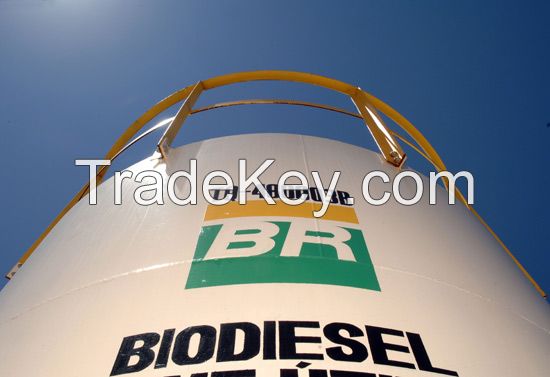详情
Biodiesel Blends
Biodiesel can be blended and used in many different concentrations,
including B**0 (pure biodiesel), B*0 (*0% biodiesel, *0% petroleum
diesel), B5 (5% biodiesel, *5% petroleum diesel) and B2 (2%
biodiesel, *8% petroleum diesel). B*0 is a common biodiesel blend
in the United States.
Low-Level Blends
ASTM International develops specifications for conventional diesel
fuel (ASTM D**5). These specifications allow for biodiesel
concentrations of up to 5% (B5). Low-level biodiesel blends, such
as B5 are ASTM approved for safe operation in any
compression-ignition engine designed to be operated on petroleum
diesel. This can include light-duty and heavy-duty diesel cars and
trucks, tractors, boats, and electrical generators.
This specification covers 2% Biodiesel Fuel (B2). The blend shall
consist of 2%
of Biodiesel Fuel (B**0) Blend Stock and *8% Low Sulfur Diesel Fuel
Oil (LSD),
Ultra-Low Sulfur Diesel Fuel Oil (ULSD) or Winter Premium Blend
Fuel Oil.
II. REQUIREMENTS:
The Biodiesel Fuel (B**0) Blend Stock used for producing B2 Fuel
shall meet ASTM D ******3 Standard Specification for Biodiesel Fuel
(B**0) Blend Stock for Distillate Fuels prior to blending B2.
Blending must take place at the refinery. The B2/DFO Blend shall
conform to the requirements of ASTM D******4b Grades with the
following modifications:
Note: B2/No. 2 Regular Blend ordered for use from April 1st to
November 1st may have a Cloud
Point of *5 o
F maximum and a Pour Point of *0 o
F maximum if requested in writing by the purchaser.
B2 Low Temperature Blending: Blends shall be of No.1 and No.2
Premium at the proportions requested by purchaser. Blended diesel
fuel oils shall meet the requirements of No.1 diesel fuel with the
following modifications:
B2/ Winter Premium Diesel Fuel Blends
B2/ Winter Premium Diesel Fuel shall be conform to the requirements
listed
below:
Lubricity All blends shall meet the **0 micron maximum requirement
specified in ASTM D*****4b. Lubricity additives shall be added to
blends that fail the lubricity requirement. Testing shall be done
to verify lubricity requirement is met.
III. SAMPLING: Samples shall be taken from the tanker at the time
of delivery. Sample containers shall be one quart metal cans with
tight-fitting screw tops lids.
IV. TESTING: Testing shall be according to test methods referenced
in ASTM D******4b or other appropriate test methods.
